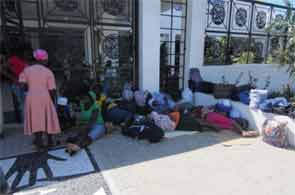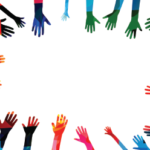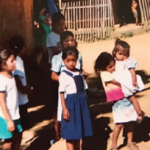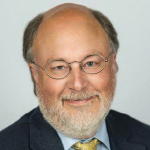
Invitation to Haiti
I was invited to work as a volunteer in Haiti at the newly constructed L’Hopital Universitaire Mirebalais (HUM). This institution was created by PIH with the support of the International Haitian Relief Fund. This fund is administered by the Haitian government and originated from donations by both foreign governments and nongovernmental organizations following the catastrophic earthquake of 2010. HUM was built in response to the need for both patient care and medical education in Haiti.
L’Hopital de L’Universite d’Etat D’Haiti, located in Port au Prince and previously the major teaching and referral hospital in Haiti, had essentially been destroyed by the earthquake. Mirebalais is situated on a high plateau about 60 km from the earthquake’s epicenter. Opened in March 2013, this 300-bed modern hospital provides care to a catchment area of more than 3 million Haitians. In October 2013, the first class of resident physicians arrived: five in internal medicine, five in pediatrics and four in general surgery. In addition, educational programs for nurse anesthetists, physical therapists, RNs, auxiliary nurses, aides and midwifes have been developed, and residency programs in emergency medicine and OB/GYN will be added in fall 2014.
A desire to serve those in need, irrespective of ability to pay, is a common sentiment among physicians.
One of the stated goals of PIH is to “provide educational opportunities that will build the knowledge and skill sets of the local caregivers so that they eventually will be able to care for patients without the need of foreign assistance.”
The hospital is operated by Haitian physicians and administrators. The fundamental role of volunteer physicians recruited by PIH from the U.S. is to serve as teachers. “Don’t fish; teach fishing” could be the program’s motto.
There are five medical schools in Haiti, graduating about 450 students per year, which, on a per capita basis, is comparable to the U.S. The six-year program, which begins after high school, focuses on lectures and textbooks while lacking strong programs in “bedside teaching.” Upon graduation, the new physicians serve a “social service” year in an assigned, unsupervised practice in the community. Haiti lacks a nationalized health service and spends less than $100 per person per year on healthcare. Less than half of the physicians take a residency, and 80% of Haitian physicians leave the country in the first five years. This is in part related to a combination of low pay, lack of available “paid positions” and general lack of support for medical care at all levels.


